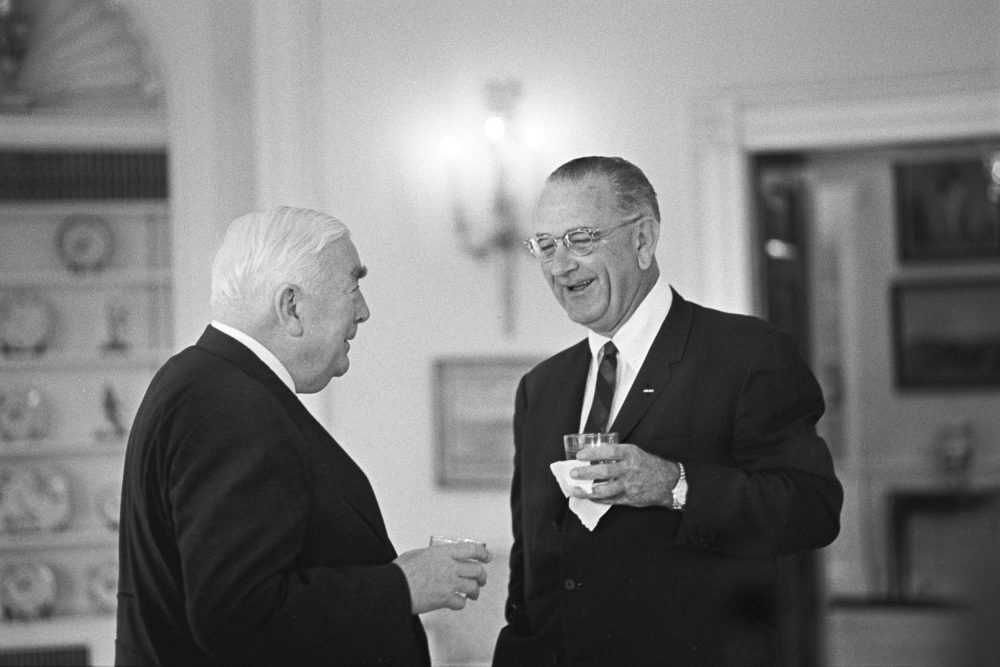
In part 1 of this series, I argued that though on the surface ANZUS seems in good health, there are at least four diverging strategic interests: American primacy in Asia, the institutional status quo, Taiwan, and ADF troops beyond Asia. The political compact needs revising to ensure the expectations of both parties can be met. In this post, I explore two different ways to achieve that.
The Menzies model
The current model of ANZUS, developed when Robert Menzies was prime minister, is based on a functional allocation of tasks. If those tasks are no longer appropriate, a partnership based on new, clearly defined roles may still make sense. This is partly how NATO reformed after the end of the Cold War. It fit the defence planners’ emphasis on the uncertainty and diversity of threats that would spread across borders.
A model for ANZUS based on specific roles would be a relatively easy transition. It would align with Australia’s expeditionary military culture. It would also reflect the fundamental asymmetry of our alliance. New tasks could be chosen, and, in exchange, tasks unwanted by one party (such as joining a Taiwan contingency) could be laid to rest.
The list of things Australia might do that are of benefit to the US is long. Those that make the most sense would rely on skills and ideas rather than material capacity. Australia’s roles could include providing global expertise in election security and building military capability. They could extend to areas in which states are under threat from the new authoritarians, and be valuably deployed to willing countries across the globe.
If we are to renew the Menzies model, it would make sense to attempt to codify the new expectations and build out the institutional structure of ANZUS, which is surprisingly weak. This would give Australia the certainty and access to US war planning it has craved for decades, while offering Washington much clearer criteria for assessing its ally’s contribution.
This model would therefore be easy and quite viable for us to move into. Yet, the example of NATO should give us pause. Functional roles have proven a weak bond to ensure sufficient spending and a sense of duty and responsibility. Indeed, NATO seems to be moving back towards a more geographic approach, and Australia is increasingly focused on its immediate region.
Ultimately, a functional model may seem appealing, but the risk would be that we continue the ad hoc pattern, where the presence and quantity of cooperation are presumed to count for far more than the purpose of our cooperation.
The MacArthur model
Another approach would be to revisit a model we’ve already practised before. This would involve the US returning to its 1942 position of using the Australian continent as a base for projecting power into Asia. Australia would focus on defending and supporting US military efforts. For shorthand, let’s call this the Douglas MacArthur model.
While I can’t speculate too far, my sense is that serious thought is being given to this approach by planners in both the US and Australia. In 2015 the US assistant defence secretary told Congress that B-1 bombers and other surveillance aircraft would be based in Australia. In 2016 the US commander of Pacific air forces revealed that discussions for temporary basing of the B-1 were still underway. In 2019 and 2020 US Defense Secretary Mark Esper has speculated about allies hosting intermediate-range missiles in Asia. And, of course, Prime Minister Scott Morrison just announced a $1.6 billion investment in RAAF Base Tindal.
Australia’s territory is the most strategically significant contribution it can make to the US in its great-power competition with China (especially in the eyes of the Donald Trump administration). Long-range bombers and missiles make the most sense given the geography of Australia, although there are other services such as battle repair, maintenance, logistics and communication support which could be of value to a United States looking to establish a military presence in Asia outside the scope of China’s missile range.
The MacArthur model may not work for a variety of reasons. Australians dislike the idea of hosting foreign bases—hence the rush by three separate conservative prime ministers (first Tony Abbott, then Malcolm Turnbull, then Morrison) to deny that was the goal. Public caution about foreign forces may shift as strategic circumstances worsen, but leadership will be needed to change public attitudes. The conversation will need to begin soon.
Second, Australia is a long way from the likely sites of any conflict in Northeast Asia. A lot would have to go wrong for the US to give up its position in Japan, South Korea and Guam to decide Australia was the best foundation for its presence in Asia.
Finally, it’s a military model at heart. Moving directly to a war-planning foundation may be right if we are certain war is coming, but it limits our efforts here and now, across political, economic and social fields to try to prevent such a war.
So, while it makes sense for the planners to keep on planning, the MacArthur model seems unlikely, and hopefully will be unnecessary.
In the final part of this series, I’ll discuss another model that may help us if we don’t want to go all the way with D.J.T., based on the approach of one of Menzies’ and MacArthur’s contemporaries, Ben Chifley.

